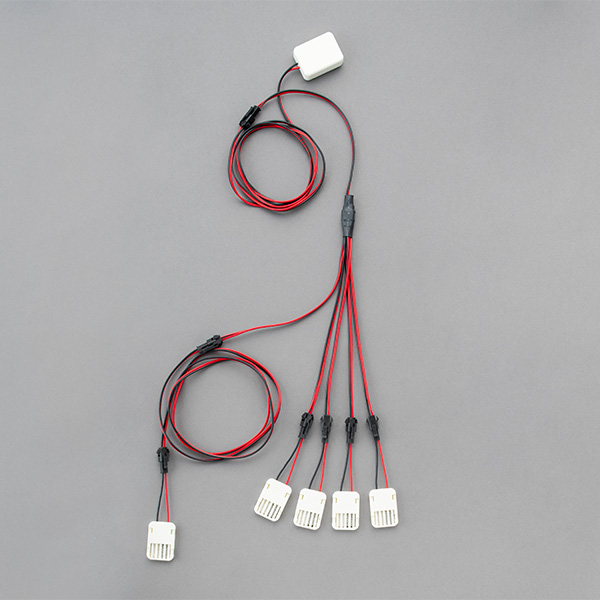Manufacturers
- Abracon
- Adam Tech
- Aerospace, Defense & Marine
- Agastat
- AIC
- AKM Semiconductor
- Alcoswitch
- Allegro
- Alps Electric
- Altera
- AMI Semiconductor
- AMP
- ams
- Analog Devices (ADI)
- Aptina Imaging
- Atmel
- Avago / Broadcom
- AVX
- Axicom
- Bccomponents
- Beyschlag
- BI Technologies
- Bourns Inc.
- Bowei Integrated Circuits
- Bridgelux
- Buchanan
- California Micro Devices
- Catalyst Semiconductor
- CGS
- Cirrus Logic
- Citizen Electronics
- CML Microcircuits
- Coiltronics
- Cooper Bussmann
- Corcom
- Core Logic
- Cree
- CSR PLC
- CTS
- Cypress Semiconductor
- Dale
- Data Image
- Deutsch
- Diodes Incorporated
- DOMINANT Opto Technologies
- E-T-A
- Eaton
- ECS
- Edison Opto
- Elcon
- EPCOS
- Epistar
- Epson
- Everlight Electronics
- Exar
- Fairchild Semiconductor
- FCI
- Freescale Semiconductor
- Fremont Micro Devices (FMD)
- Fujitsu Semiconductor
- Fulltech Electric
- General Semiconductor
- Harvatek
- Holsworthy
- Hsuan Mao Technology
- IDT
- Infineon Technologies
- Innolux
- International Rectifier (IR)
- Intersil
- IRC
- ISSI
- IXYS-IC
- Jing Cheng Electronical
- JL World
- Johanson Dielectrics
- Johanson Technology
- JRC / NJR
- JST
- KEC
- Kilovac
- Kingbright
- Kyocera Industrial Ceramics
- LEDiL
- Linear Technology / ADI
- Lite-On Technology
- Littelfuse
- Lumex
- Lumileds
- Luminary Micro
- Luminus Devices
- Macronix
- Maojwei / ZJPT
- Maxim Integrated
- MCC
- Mean Well Enterprises
- Microchip Technology
- Micron
- Microsemi
- Mini-Circuits
- Molex
- Murata Manufacturing
- Murata Power Solutions
- MWT
- National Semiconductor
- Nichicon
- Nippon Chemi-Con
- NJR / JRC
- NVE
- NXP Semiconductors
- OEG
- Omnivision
- ON Semiconductor
- Optek Technology
- Optrex
- OSRAM Opto Semiconductors
- OTAX
- Panasonic
- Peregrine(pSemi)
- Potter & Brumfield
- Power Integrations
- PowerStor
- Preci-Dip
- Prewell
- Products Unlimited
- Pulse Electronics
- PulseCore Semiconductor
- Qorvo
- Raychem
- Renesas Electronics
- RFMD
- Richtek Technology
- ROHM Semiconductor
- Rubycon
- Samsung Electro-Mechanics
- Samsung Semiconductor
- Schaffner
- Schrack
- Seiko Instruments, Inc. (SII)
- Semtech
- Sensata
- Seoul Semiconductor
- Sfernice
- Sharp Display
- Sharp Microelectronics
- Silicon Labs
- Siliconix
- Skyworks Solutions
- SoniCrest / JL World
- Spansion
- Sprague
- Stanley Electric
- STMicroelectronics
- Sunny Electronics
- Susumu (SSM)
- Taimag
- Taiyo Yuden
- TDK
- TDK-Lambda
- TE Connectivity
- Teccor
- Texas Instruments (TI)
- Thin Film
- Tianma Micro-electronics
- TOCOS
- TOKO
- Toshiba Electronic Components
- TT Electronics
- Tusonix
- TXC
- Tyntek
- Vishay
- Vishay Precision Group
- Vitramon
- Walsin Technology
- Weidmuller
- Welwyn
- Wickmann
- Winbond
- Xilinx
- Yageo
- Zetex Semiconductors
- ZJPT / Maojwei
News
Asahi Kasei Microdevices Corporation DC/DC Converter for Energy Harvesting Adopted in FUJIKURA COMPOSITES Inc.’s Battery-Free Liquid Detection Sensor:
2024-10-29 | Return
Description
Asahi Kasei Microdevices Corporation is pleased to announce that our ultra-low power consumption and low voltage step-up DC/DC converter "AP4470," which is developed and mass-produced by our company, has been adopted in the "Battery-Free Liquid Detection Sensor" developed by FUJIKURA COMPOSITES Inc. (Head Office: Koto-ku, Tokyo; President: Kenji Morita; hereinafter " FUJIKURA COMPOSITES ").

AP4470, developed by AKM, is capable of step-up voltage with an input power as low as 1 µW, thanks to its low power consumption as a DC/DC converter, enabling functions such as sensing and communication. The necessary power can be harvested from various sources around us, such as a few drops of water. This makes it a promising solution for use in energy harvesting applications, such as self-powered sensors.
FUJIKURA COMPOSITES has a long history of experience and a proven track record in sensing technology, providing high-performance sensor solutions for various industries. The newly developed "Battery-Free Liquid Detection Sensor" is a groundbreaking sensor that operates without an external power source or batteries. Traditional wired sensors required manual installation work by personnel, but this product eliminates that need, making it suitable for applications in locations where wiring and power installation are difficult or for applications that demand cost reduction. This solution holds significant potential for infrastructure applications, such as detecting water leaks caused by aging water pipes or monitoring river water levels. It supports quick and efficient flood prevention and infrastructure maintenance.
AKM’s energy harvesting ICs, including AP4470, are capable of collecting small amounts of environmental energy, such as indoor light or body heat, in addition to water, to power electronic devices. Moreover, by reducing the number of components, they also contribute to the miniaturization of IoT devices. We will continue to support the development of applications that were previously difficult to realize, such as various sensors and wireless communication beacons.
Source:https://www.akm.com/





